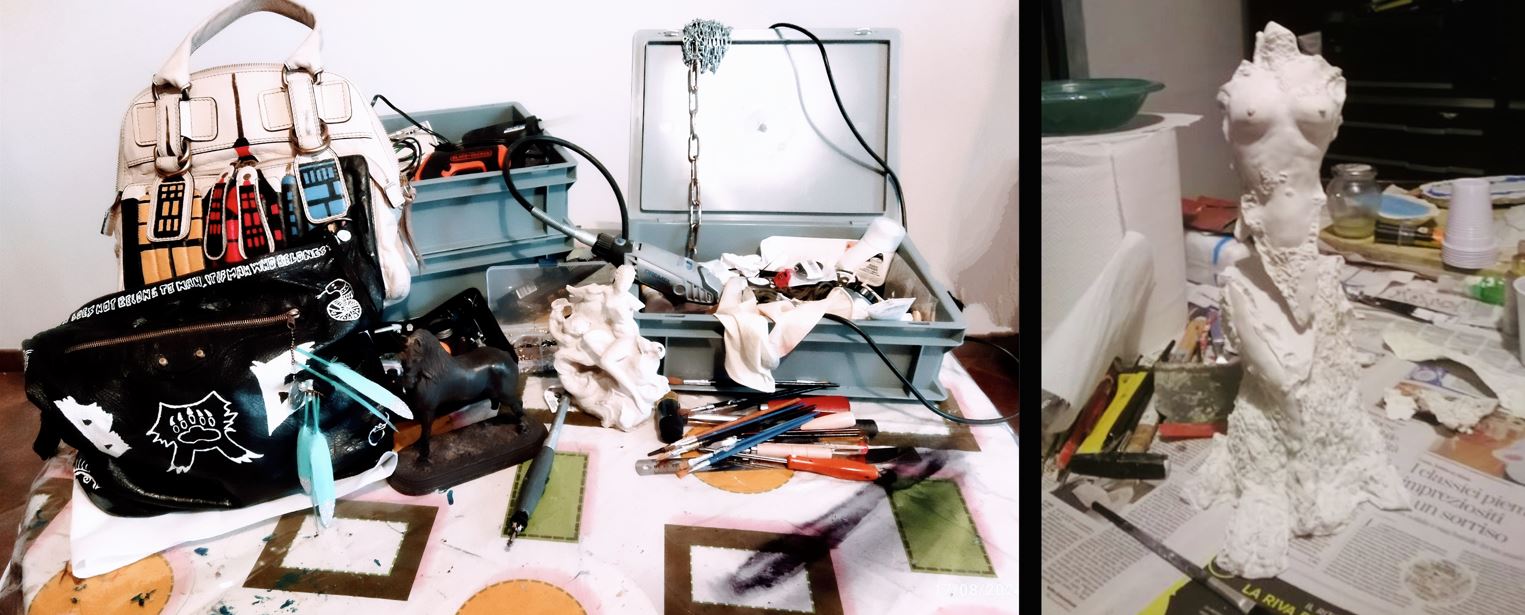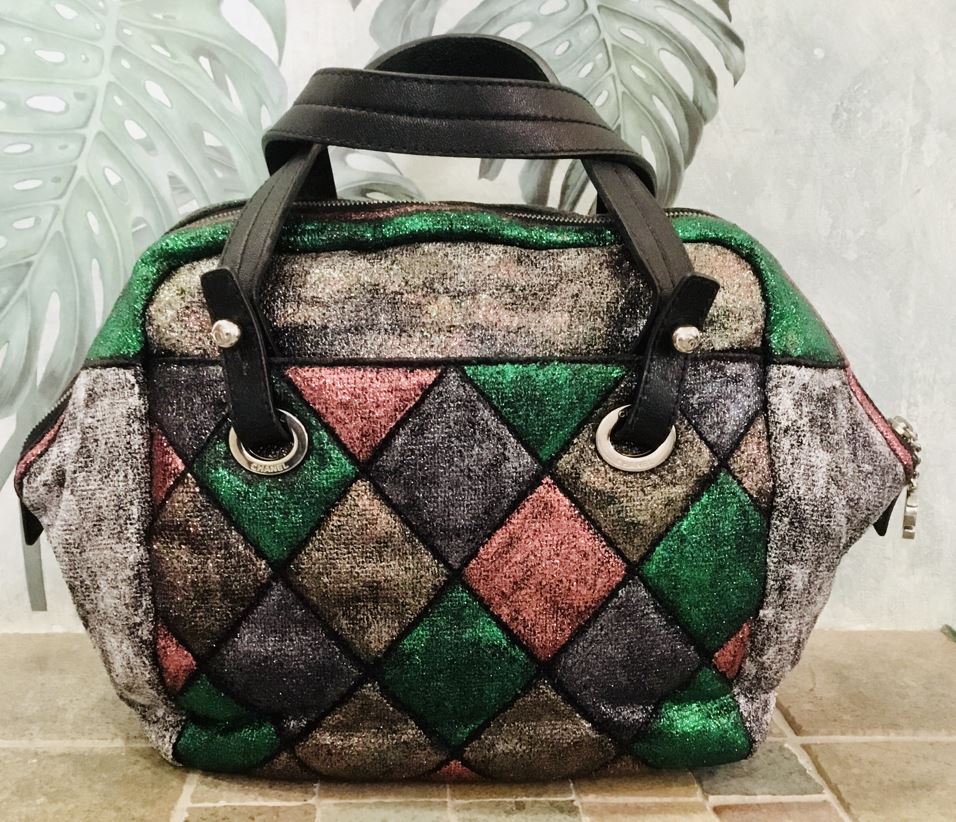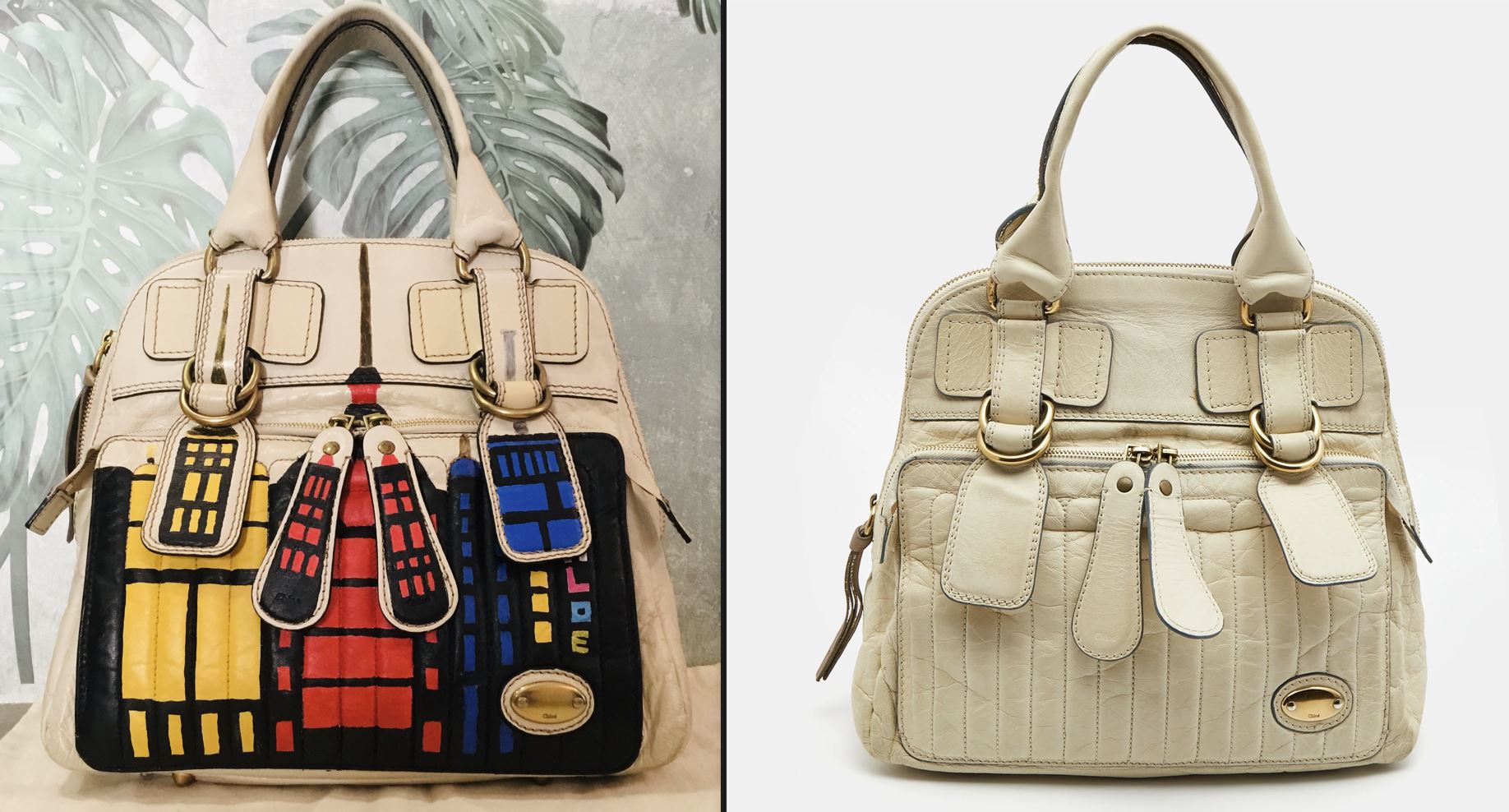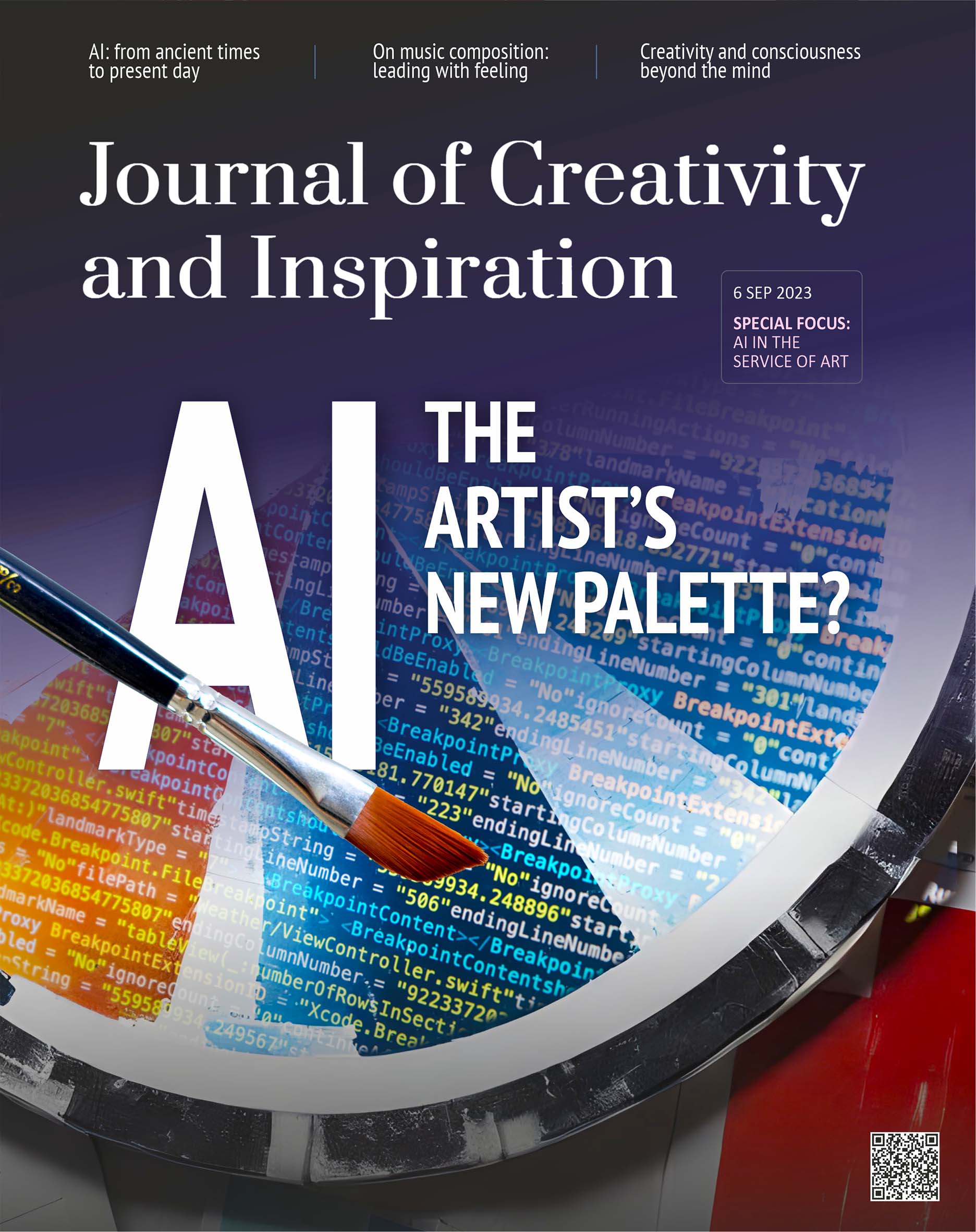PERSPECTIVE
Opening drawers in my memory: a sculptor’s creative process
6 September 2023 – Vol 1, Issue 1.
Inspiration and art. I have often wondered what links these two together, and if one can exist without the other. I am a sculptor and a curious craftswoman. I love to write and paint but sculpture is the art that fascinates me the most. My creative process draws a lot from materials. My inspiration almost always comes from tactile emotions. I love metal and stone, and I enjoy bending and shaping, drilling and smoothing.
I could not create if I didn’t have a wealth of sensory and emotional experiences. Such experiences and knowledge can bring about inspiration, as we can see with the work of the greatest geniuses and artists of the past. Leonardo Da Vinci, for example, possessed wide-ranging ‘encyclopaedic’ knowledge, which helped to shape him into a Master in almost all fields of art and science.
Can there be art without inspiration? I am convinced that the answer is yes. In ancient times patrons used to employ poets, writers, artists and architects to create epic poems and art for them. The poem by Virgil, ‘The Aeneid’; sculptures created to celebrate the greatness of an emperor or the Pope, paintings and buildings…
Some liberal patrons did give artists a free hand, but there were other patrons who commissioned specific works that had to carefully reflect their wishes. Virgil’s ‘The Aeneid’ was commissioned by Augustus to honour the birth of Rome and its power. Perhaps for this reason, the poem should not be seen as a work of art?

The artist’s workspace. Photos: Silvia Contarelli, 2023.
I believe that some processes can bypass inspiration… Michelangelo’s sculpture ‘David’, for example, was commissioned for a fee of 400 ducats, and was later controlled by a committee consisting, among others, Leonardo Da Vinci and Botticelli who decided where it would exhibit. Michelangelo must have been particularly inspired or perhaps, more likely, he was in need of the commission?
Inspiration is a vast term to be confined to arts alone. One can be inspired to create artwork, but inspiration can also operate on a purely conceptual level. Inspiration is individual and concerns only those who connect to it, those who feel it so strongly that the art dictated by the inspirational force may not be understood by other people. For this reason, I prefer to talk about the creative process, as my inspiration is too intimate. I have a need to materially realize my ideas, not to dwell on definitions of inspiration.
I personally think that it is not up to me to define myself as an artist, but rather it is the public’s role to do so. It is up to the people who are moved by the work, for better or for worse, to decree the birth of an artwork. Artists, from their perspective, aspire for audience response. Indifference is art’s worst enemy.
I often see objects or shapes that trigger something in me, and seem to open drawers in my memory. I see a photo of a tree with a large sinuous and curved trunk, with long branches reaching towards the sky, and I immediately visualise Daphne in the woods running away from Apollo, and transforming into a tree. At the same time, I can see a mythical entity trapped inside the earth, desperately trying to reach the sky with her wounded wings. I usually start modelling in clay, creating a draft of my sculpture. I make a plaster cast, and then it sometimes happens that I destroy parts so to insert other materials. I want the work to be as close as possible to my feelings and my vision. At this point, I don’t know if I made a work of art, but I have certainly respected and followed the dictations from my inspiration. At the end of my creative process, after my sculpture is complete, I feel empty. I feel ‘unloaded’ as if I gave part of myself to the work in front of me. I have always sold my sculptures with great melancholy…
My approach to the creative process changes depending on the work I undertake. Often, I have found myself hand-painting bags of known brands to personalize them. With these commercial works, a part of my inspiration must give way to the rules of the market. I have to shape my vision by creating an object that would please as many clients as possible. To achieve works that appeal to audiences, I start with research, downloading photographs, reading magazines, and learning about the brand that I am working with. The brand must be respected. I learn about current fashion trends, what people like, what is ‘cool’. The work unravels in a more technical way in this case. I feel that it is no longer inspiration that guides me, it is me who guides inspiration.
I started customizing bags for fun and to satisfy my curiosity. As I am a trained sculpture restorer, I noted parallels between customizing bags and restoring ancient statues. In the same way that an ancient statue takes on new life after it has been restored, so does a restored fashion object receive new life. Working with bags, I am recovering the items, in this case with a view of sustainability. I free my imagination and also test materials, colours and tools.
I bought a Chanel bag in very bad external conditions. The finely woven solid cotton fabric was originally covered with a gummy layer which over time had crumbled, becoming sticky. I used mechanical tools and specific products to remove the patina, after which I made many tests to find the right type of water-based colours to use. The bag was black, but I wanted its ‘new life’ to be colourful and sparkling. At the same time, I wanted to respect the elegance that has always distinguished Chanel brand from other brands. Once I found the right colours, I applied them with a brush (I never use a spray), and once dried I applied a protective fixative layer.

Chanel bag, upcycled. Photo: Silvia Contarelli, 2023.
The concept of art applied to fashion is not new. An example is Louis Vuitton bags covered with prints of famous paintings. In my work, I try to create a new image that is shaped by the brand’s philosophy. I am searching for the iconic elements to be recovered, making them unique. It makes the bag a unique item in the world, and makes the person who wears it feel special.
I am often struck by the design of the sturdy leather which suggests a clear image in my mind. In the case of the following bag, the image I saw was of New York’s skyline. This image seemed perfect for the brand, Chloe, which is a prestigious fashion house, in my opinion. The bag is tailor-made for women of character. I see it situated in bright offices or in city shopping areas. It would be perfect on the TV character Carrie Bradshaw’s arm.

Left: upcycled Chloe Quilted Leather Tote Shoulder bag. Photo: Silvia Contarelli, 2023. Right: The same model bag, shown for comparison. Photo from eBay, used under Fair Use for educational/critical purposes.
So let’s go back to the initial question: are inspiration and art intimately linked? In my experience they are, but only when a very rare astral conjuncture happens: when the author’s inspiration coincides perfectly with the needs of the people who approach the works, even if only for a certain period of time. This is the case for many artists who are, in my opinion, more authentic because they were discovered and appreciated. Was Picasso therefore a better artist than Leonardo da Vinci? I don’t think so, but I am convinced that the sacred fire of Picasso’s inspiration was more genuine and that the art he produced indeed reflected that.
About the author
Silvia Contarelli is a teacher, specialising in Italian language, literature, cinema and art. She holds a Master’s degree in Library & Information Science (MLIS) from the University of Turin, Italy, and has also completed studies in restoration of ancient sculptures.
